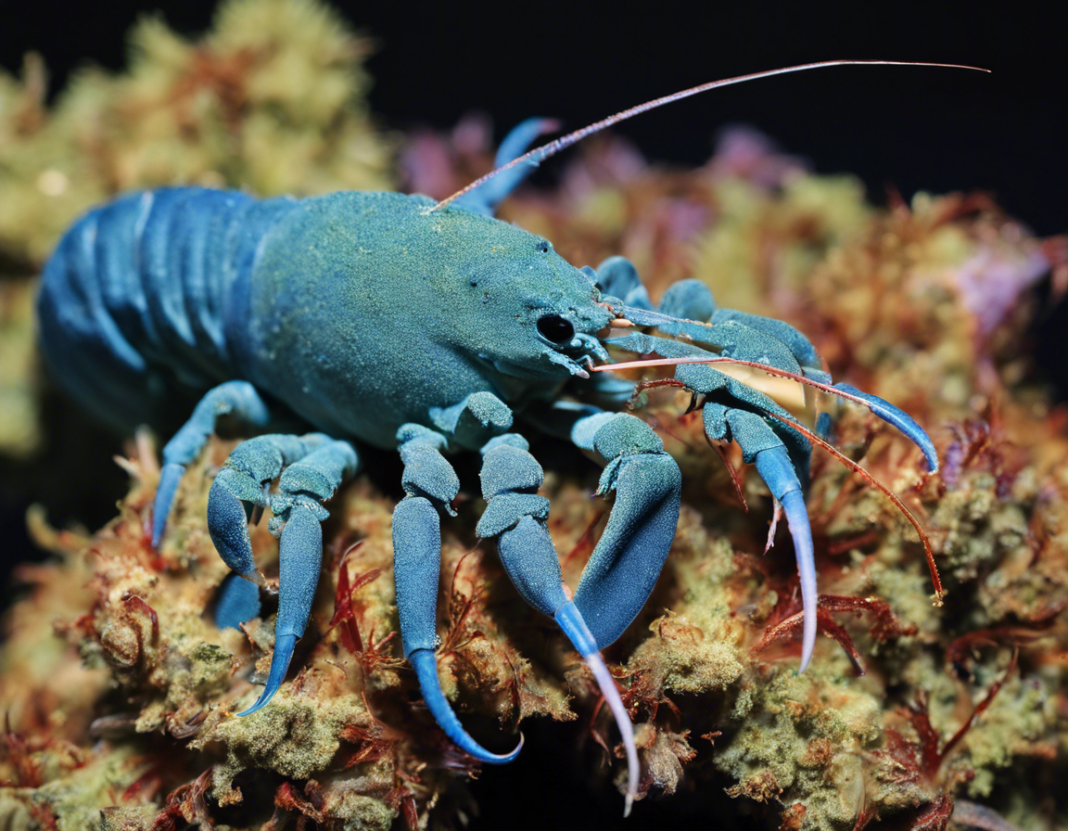Introduction
Lobsters are fascinating creatures that have captured the attention of seafood enthusiasts and marine biologists alike. While the common image of a lobster is that of a reddish-brown crustacean, there exists a rare and mesmerizing variation that stands out in the deep blue sea – the Blue Lobster. Blue lobsters, scientifically known as Homarus americanus, are a genetic anomaly that occurs in a small percentage of the lobster population. In this article, we will delve into the mesmerizing world of the rare blue lobster strain, exploring its distinct characteristics, the science behind its striking blue coloration, its rarity in the wild, as well as its significance in both the culinary and scientific realms.
Characteristics of Blue Lobsters
Blue lobsters are visually captivating due to their striking blue hue, which ranges from a vibrant cobalt blue to a light sky blue. This coloration is a result of a genetic mutation that alters the levels of certain pigments in the lobster’s shell and tissues. While the common reddish color of lobsters comes from a mix of astaxanthin (a red pigment) and a blue protein bound to the shell, blue lobsters produce significantly more of the blue protein, resulting in their unique coloration.
Apart from their distinctive blue color, blue lobsters share the same physical features as their more common counterparts. They have ten legs, powerful claws for defense and feeding, a hard exoskeleton for protection, and compound eyes that provide excellent vision in the dark depths of the ocean. Despite their captivating appearance, blue lobsters are not always easy to spot in the wild due to their color providing effective camouflage against predators in their rocky, underwater habitats.
Blue Lobsters: Rarity and Distribution
The occurrence of blue lobsters in the wild is exceedingly rare, with estimates suggesting that only about one in every two million lobsters is born with this unique coloration. This rarity makes blue lobsters a highly sought-after marvel by collectors, marine enthusiasts, and even by aquariums looking to add a touch of exotic beauty to their displays.
While blue lobsters have been found in various locations along the Atlantic coast of North America, including Maine and the Canadian Maritimes, their exact distribution remains somewhat of a mystery due to the challenges of tracking these elusive creatures in their natural habitat. Their rarity in the wild also poses conservation concerns, as the genetic mutation responsible for their blue coloration can lead to other health issues or reproductive challenges that may impact their long-term survival.
The Science Behind Blue Lobsters
The genetic mutation that gives rise to blue lobsters is known as leucism, a condition characterized by the partial loss of pigmentation in an animal. Unlike albinism, where animals lack all types of pigmentation and appear white, animals with leucism retain some pigments while displaying unique color variations like blue, light pink, or pale yellow. In the case of blue lobsters, the increased production of the blue protein crustacyanin is what gives them their stunning blue hue.
From a scientific perspective, studying blue lobsters and other color variants of marine life provides valuable insights into genetics, pigmentation pathways, and evolutionary processes. By unraveling the genetic mechanisms behind these color variations, researchers can deepen their understanding of how genes influence traits in both lobsters and other organisms, shedding light on the complex interplay between genetics and the environment.
Significance of Blue Lobsters
Beyond their visual allure and scientific value, blue lobsters hold cultural and culinary significance in regions where they are found. In seafood markets, blue lobsters often fetch a premium price due to their rarity and the novelty they offer to consumers looking for a unique dining experience. Chefs and seafood connoisseurs appreciate the aesthetic appeal of blue lobster meat, which turns a vibrant white when cooked, contrasting beautifully with the blue shell.
In regions like Maine, known for its lobster fishing industry, blue lobsters have become iconic symbols of the state’s rich maritime heritage. Lobster festivals and events often feature the elusive blue crustaceans as main attractions, drawing crowds eager to catch a glimpse of these rare treasures from the sea.
Conservation Challenges and Ethical Considerations
While the presence of blue lobsters captivates many, it also raises important conservation challenges and ethical considerations. The rarity of blue lobsters in the wild underscores the importance of sustainable fishing practices and marine conservation efforts to protect these unique creatures and their habitats. Overfishing, habitat destruction, and climate change pose threats to lobster populations, including the already scarce blue lobsters, emphasizing the need for responsible stewardship of marine ecosystems.
Furthermore, ethical considerations arise when it comes to collecting and displaying blue lobsters in aquariums or private collections. While showcasing these rare creatures can educate the public about marine biodiversity and the beauty of the natural world, it is essential to prioritize the well-being of the lobsters and ensure their needs for proper care, habitat, and social interaction are met in captivity.
Frequently Asked Questions (FAQs)
-
Are blue lobsters safe to eat?
Blue lobsters are safe to eat and are considered a delicacy by many seafood enthusiasts. When cooked, the blue color of their shells turns bright red like traditional lobsters due to the denaturation of the blue protein. -
Do blue lobsters have the same taste as traditional lobsters?
Blue lobsters have a taste and texture similar to traditional lobsters. The meat is sweet, succulent, and prized for its delicate flavor, making it a sought-after ingredient in gourmet cuisine. -
Can blue lobsters mate with traditional lobsters?
Blue lobsters can mate with traditional lobsters, as they belong to the same species (Homarus americanus). However, the genetic mutation that causes the blue coloration may be passed onto offspring, leading to a mix of normal and blue-colored lobsters in subsequent generations. -
How do blue lobsters defend themselves in the wild?
Blue lobsters, like their traditional counterparts, use their powerful claws for defense and to capture prey. They can also camouflage themselves against predators by blending into their rocky surroundings, aided by their blue coloration. -
Are blue lobsters more susceptible to diseases or health issues?
The genetic mutation that gives rise to blue lobsters does not necessarily make them more susceptible to diseases. However, genetic anomalies can sometimes be linked to other health concerns, so monitoring the health of blue lobsters in the wild and in captivity is important. -
Can blue lobsters change color?
Blue lobsters retain their blue coloration throughout their lives, as it is a result of a genetic mutation affecting the production of pigments in their shells. The blue hue may appear more vivid or faded depending on environmental factors and moulting cycles. -
Do blue lobsters live longer than traditional lobsters?
Blue lobsters have a similar lifespan to traditional lobsters, which can range from 30 to 50 years depending on various factors such as predation, habitat conditions, and fishing pressures. Proper conservation measures can help ensure the longevity of blue lobster populations. -
Can blue lobsters be kept as pets in home aquariums?
While blue lobsters can technically be kept in home aquariums if provided with suitable conditions, including ample space, hiding spots, and proper water parameters, they require specialized care due to their unique coloration and genetic characteristics. It is essential to research their care requirements thoroughly before keeping them as pets. -
Do blue lobsters prefer certain types of habitats over others?
Blue lobsters, like traditional lobsters, thrive in rocky, underwater habitats that provide ample hiding places, protection from predators, and access to food sources. They are typically found in coastal waters with suitable conditions for molting, breeding, and foraging. -
What conservation efforts are in place to protect blue lobsters?
Conservation efforts to protect blue lobsters and their habitats include sustainable fishing practices, marine protected areas, research on lobster populations, and public awareness campaigns about the importance of marine biodiversity. Collaborative initiatives involving government agencies, conservation organizations, and the fishing industry aim to safeguard blue lobsters for future generations.
In conclusion, the rare blue lobster strain offers a glimpse into the captivating world of marine biodiversity and genetic diversity, showcasing the beauty and complexity of nature’s creations. By studying, appreciating, and conserving these enigmatic creatures, we can not only unravel the mysteries of their unique coloration but also contribute to the preservation of our oceans’ delicate ecosystems. Whether admired for their stunning appearance, savored for their delectable meat, or cherished for their symbolic value, blue lobsters continue to intrigue and inspire all those who encounter them along the seafloor’s shimmering depths.









